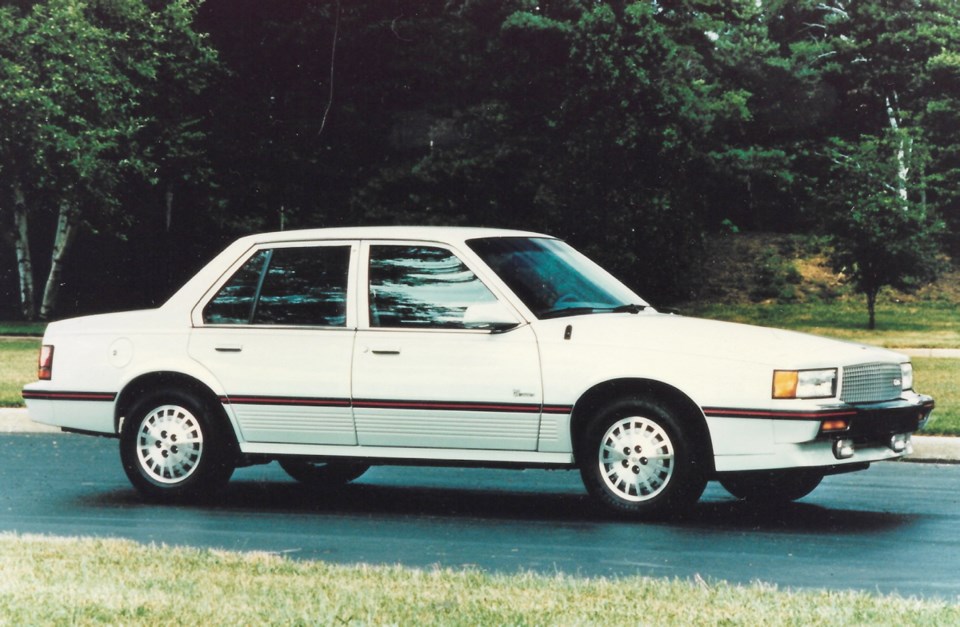The 1970s and ’80s brought challenges for the North American automobile industry. Two energy crises in the 1970s increased environmental and fuel-economy concerns and resulted in government economy legislation.
Along with that was the threat of rising foreign competition, particularly from Japanese cars whose sales would soon exceed those of the Volkswagen Beetle in its heyday.
Under these pressures, American companies desperately sought solutions. Even Cadillac, with its long reputation for technical innovation, succumbed to questionable measures in the quest for better fuel economy.
One was the introduction of a diesel engine in 1978, a 5.7-litre (350 cu. in.) gasoline V-8 converted to diesel by the Oldsmobile division. It did not make the transition easily, resulting in a powerplant with reliability problems.
The next Cadillac foray was the “variable displacement” V-8-6-4 of 1981. By deactivating valves in response to changing engine load or throttle position, the V-8 could be reduced to running on either six or four of its eight cylinders. Although a good idea in theory, it didn’t work out well in practice. It would take the application of electronics to make it practical, and cylinder deactivation is now accepted technology.
The Cadillac V-8-6-4 resulted in disgruntled and even litigious Cadillac owners. It besmirched Cadillac’s vaunted reputation for engineering excellence, and was discontinued in 1982.
Another uncharacteristic move by Cadillac, a brand known for its large luxury cars, was the introduction of a subcompact car, the Cadillac Cimarron, which arrived in 1982. It was Cadillac’s version of the GM J-car.
The J-car was a cross-engine, front-drive subcompact with an overhead-valve, four-cylinder engine. Its goal was to achieve good fuel economy and counter the rising import tide, the job the earlier GM X-cars (Chevrolet Citation, et al.) had tried to do but hadn’t accomplished.
The J-car introduced for 1982 was the ultimate expression of GM’s corporate auto body “shell game,” coming as the Chevrolet Cavalier, Pontiac J2000, Oldsmobile Firenza, Buick Skyhawk and Cadillac Cimarron.
Although not as trouble-prone as the diesel and V-8-6-4, the Cimarron would not enhance Cadillac’s reputation as a purveyor of luxury cars. Cadillac came to the subcompact car market later, because its management had not intended to participate in the J-car program. But dealers, driven by overriding fuel-economy concerns, demanded that Cadillac have its version, too.
Arriving later meant Cadillac could do little but fit a different grille and improve the interior with amenities such as leather seats. So the Cimarron looked just like what it was, a deluxe and more expensive version of the Chevrolet Cavalier, although being a Cadillac, it came with more standard equipment.
The Cimarron, the first four-cylinder Cadillac since 1914, was aimed at two markets: BMW/Audi/Volvo buyers, and current owners of large Cadillacs seeking a smaller second car.
Import buyers immediately noted that the Cimarron, like all J-cars, was heavier than they had expected, which degraded performance and economy. This was caused in part because cost considerations forced GM engineers to use existing heavier X-car components, and fuel economy goals dictated the use of gear ratios for economy, not performance.
Car and Driver magazine compared an early four-speed manual (automatic was also available) Cimarron with four imports, a Volvo DL, Honda Accord, Audi 4000 and a BMW 320i.
They found that it fell in the middle in price, was next to the slowest (the Accord) in acceleration to 100 kilometres an hour at 13.7 seconds, and was slowest of all in top speed at 146 km/h. The baby Caddy’s performance wasn’t near its intended competitors, Volvo and Audi, although it gave much better fuel economy.
In an attempt to make the Cimarron more competitive, Cadillac upped the displacement to 2.0 litres from 1.8 and replaced the carburetor with throttle-body fuel injection for 1983. It also got a five-speed manual transmission.
Appearance was revised with a more Cadillac-like grille, handsome cast wheels and a “D’Oro” option comprised of black paint and gold trim.
Cimarron slid through 1984 with few changes, then for 1985 it got the Chevrolet-designed 2.8-litre overhead-valve V-6 (from the X-car), a more aggressive optional suspension and dressed up interior and exterior.
Cadillac carried the Cimarron on with minor revisions through the 1988 model year when it finally gave up and discontinued it (GM had stopped marketing it in saąúĽĘ´«Ă˝ a couple of years earlier).
The Cimarron never achieved the popularity Cadillac had hoped it would. While the division’s traditional models were selling in the 300,000-per-year range, the Cimarron couldn’t break 20,000. In spite of Cadillac’s prowess with styling cues and luxury and convenience items, the Cimarron was never able to outgrow its humble J-car beginnings. It wasn’t a bad car, it just wasn’t seen as a real Cadillac.



